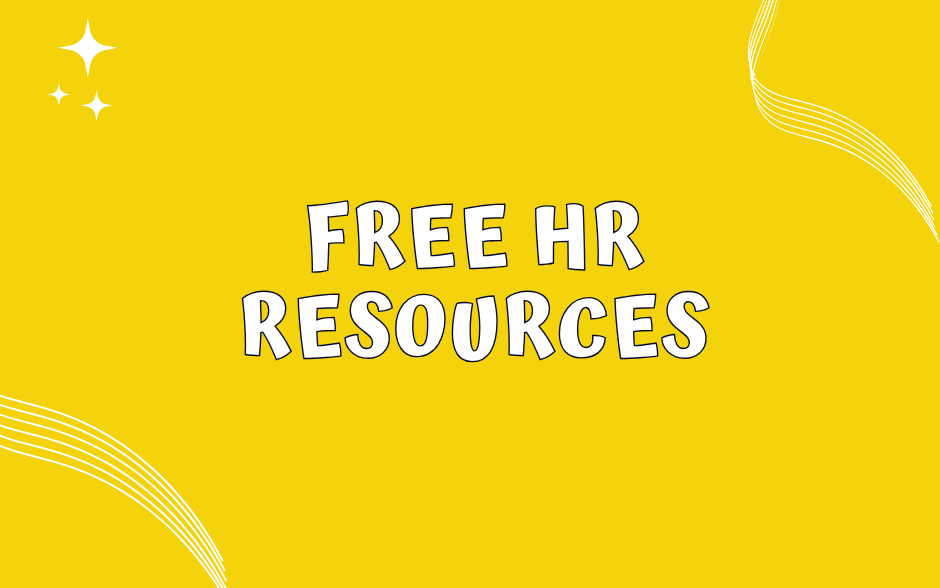What Makes a Great Employee Handbook?
It's a great way for a small business owner to welcome new employees. It's usually sent out with their Contract of Employment. 📖
Existing employees can dip in and out of, until they are familiar with how things work in the business.
If you're now thinking 'do I need an employee handbook' then the answer is yes. Employee handbooks are popular with businesses of all industries and sizes, from large companies like FCA, Marks & Spencers, Tescos, Boots and Greggs through to companies hiring their first employee, who want great HR foundations from the start.
They also don't have to be an expensive investment for small business owners.
If you buy a done-for-you employee handbook template like mine, you can have one in place within an hour. It's got a ⭐️⭐️⭐️⭐️⭐️ rating. Also, when the law changes, you’ll get access to future versions I create too.
What's included in an employee handbook
There's no right or wrong as every business is different. Here's some info on what's often included:
- A welcome letter from the MD or business owner
- Statement about your company strategy, vision and values
- Your long-term strategy
- Details of your product or service
- Information about company benefits
- Dress code info
- Absence & Time Off Policies
- All the compliance elements like code of conduct, disciplinary, grievance etc.
- Training & development info
- Day to day ways of working like communication, team meetings etc
What makes an employee handbook great?
Problems happen due to misunderstandings - often because things aren’t written down.
Here’s some qualities that make it great with the benefits for a business to have one.
#1: Convenience 💡
Having all your policies in one document makes everything easy to find and super convenient. It also provides employees with clarity as to what you expect of them, and what they can expect of you and also how to book holiday, report sickness absence etc.
#2. Explains your culture & values 💃
It helps you showcase the culture you want to create. The information you include and the language you use convey an image of the kind of employer you are. It also helps your employees to understand your company values.
#3. Ensures fairness and consistency 🙂
Trust is a key part of the employment relationship. Employees want to be treated fairly and with respect. Having policies and procedures helps achieve that. If your employees sense that they’re not all being treated the same way, this could lead to claims of discrimination.
#4. Productivity Boosting ⏰
If you don't have a human resources manager, you may get a lot of employee questions about holiday entitlements, sickness, maternity etc, then a handbook is a game-changer. When you have good policies in place that explain things, then employees can take a look themselves.
#5. Reduces Risk 🙌
It's not a legal requirement to have an Employee Handbook. But it is a legal requirement to have some specific employment policies, such as health and safety, disciplinary and grievance policies. If any of your employees join a trade union, it's also great to have things in order. Plus, it shows you take your responsibilities seriously as an employer, so you have peace of mind.
It's important you treat people fairly to avoid employment tribunal claims of bias or discrimination. So, if you ever got sued, this could be a central document in your defence case.
Make sure your new employees know they are expected to read it before they sign their contract, and they know who to speak to if they have any questions. Get them to sign a disclaimer/ acceptance form to acknowledge they’ve received, read and understood it.
Is it a legal document?
If you state at the beginning of the handbook that it’s non-contractual, then no. You’re basically saying that you have the right to make reasonable changes to anything contained within it from time to time.
If it was 'contractual', then it would be a legal document. This means you'd need to discuss and agree on any changes to the policies with your employees. This is called two-way consultation. This is a very time consuming and painful way to operate when you're a small business.
No one needs this level of formality if all you’re doing is tweaking your procedure on calling in sick or changing it to comply with the law. So I'd highly recommend making it non-contractual.
Where to store your employee handbook
You can give a copy to each of your new employees and have a copy either on your shared drive, HR System or intranet or in a communal location in your workplace where people know where to find it.
If you make changes, don't forget to let your employees know. Having a date and version number can help to avoid any issues or misunderstandings.
How often to update your employee handbook
Things change fast in the modern world. So updating the employee handbook every six months keeps fresh, relevant and up to date with employment law. ⏱
If you’re daunted by the thought of creating an employee handbook yourself, you can find my downloadable employee handbook template here, all ready for you to customise for your business, and saving your time and effort in creating one from scratch. 📲🎀
Best Employee Handbook Examples
Even once you know everything that needs to go into an employee handbook, it can still be hard to really envision what they’re supposed to look like once they’ve come together. This is where examples come in. Here are three great employee handbook examples worth reviewing:
- Valve's Employee Handbook - This handbook is one of the most popular. It went viral a while back because of how well it’s executed, touching on everything from company philosophy to walking new hires through their first day of work.
- Hubspot - This handbook makes the list because it manages to achieve so much through a traditional PowerPoint format. By sharing it on slideshare and making it public they practise the transparency they preach in the process.
- Netflix - There’s a reason that there is a good chance that you’ve probably heard about Netflix’s employee handbook before. It's a good one.
As these examples show, there are plenty of ways to approach your employee handbook. Start with the foundation and values of your company and create one that's most valuable for you.







